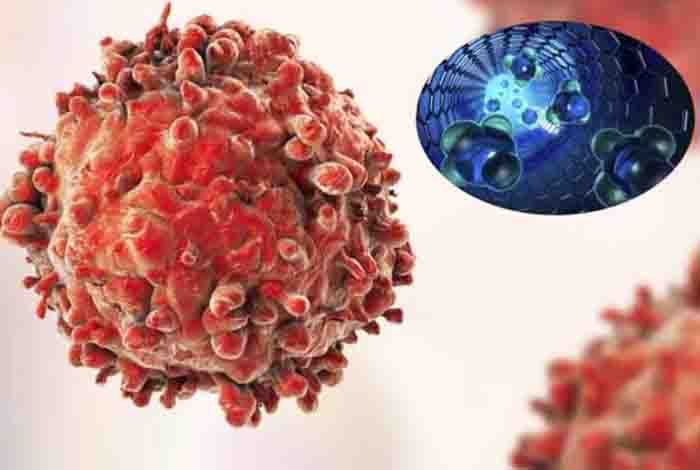
DNA Nanorobots Programmed to Combat Cancer by Searching and Destroying Tumors

Scientists at Arizona State University (ASU), along with scientists from the National Center for Nanoscience and Technology (NCNST), China have recently programmed nanorobots that can effectively treat cancer by stopping blood supply in tumors.
Hao Yan, director at the Biodesign Institute’s Center for Molecular Design and Biomimetics, ASU, along with Milton Glick, a professor at School of Molecular Sciences, revealed that they have successfully developed nanorobots for targeted cancer treatment. The researchers emphasized that this study marks a major advancement in nanomedicine. Yan stressed that this treatment can be implemented to treat various cancers because most of the blood vessels that feed tumors are similar. This technology was successfully demonstrated for the first time in ovarian, lung, melanoma and breast cancer bearing mouse models.
Yan is a pioneer and expert in DNA origami field. He has developed various complex atomic-scale structures for last two decades. The nanoparticle structures are built from DNA that have the ability to fold in different sizes and shapes, and around thousand times less than width of an average human hair.
Nanomedicine is a branch of medicine that involves nanotechnology for treating various diseases like cancer. Nanoparticles can easily diagnose and eventually treat several complex diseases. The team of scientists has successfully developed a fully programmable robotic system that can cut-off the blood supply to the tumor by initiating blood coagulation. These nanoparticles can cause blood coagulation resulting in destruction of tumors.
Every nanorobot was made using a rectangular, flat DNA origami sheet with a dimension of few nanometers. An enzyme known as thrombin can cause blood clotting. This enzyme is adhered to the nanoparticle surface. This enzyme thrombin can cut off blood supply to the tumors which in turn would induce death of tumor.
About four thrombin enzyme molecules were attached to each DNA origami sheet. This sheet was then folded upon itself to form a hollow tube-like structure. These nanoparticles were then injected into the cancer mouse models. The nanorobots had a special molecular payload on their surface known as DNA aptamer. This DNA aptamer can easily seek tumor cells by searching for a protein known as nucleolin, which is present only on tumor cells and is absent in healthy cells. The nanoparticles acted quite quickly and surrounded tumor tissue within hours of injection. The nanorobots proved to be effective in destroying tumors. These nanorobots didn’t travel to the brain or coagulated blood when administered in normal mice. The treatment could successfully search and destroy tumors within a day of administration. After inhibiting the tumors, the nanorobots degraded and eventually got eliminated from the system.
Yan and his team are excited about this recent advancement in nanomedicine which can pave way for novel and better treatment approaches for treating various types of cancer. Several other diseases can be treated in similar way by changing nanoparticles’ geometry, modifying the target groups, and using different molecular payloads.
This study was recently published in the Journal Nature Biotechnology.










